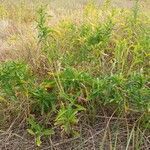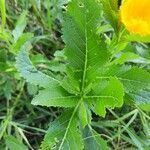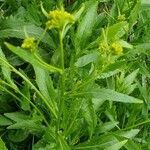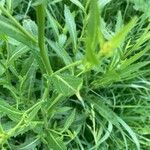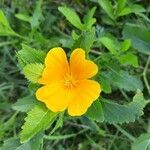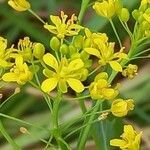Perennial to 6 dm, from rather thick and fleshy creeping roots; lvs oblanceolate, 3–10 cm, mostly obtuse, dentate to subentire, gradually tapering to an auriculate base; pet slightly longer than the sep; mature pedicels ascending, 7–15 mm; frs globose, 1–2 mm, about as long as wide, the replum circular in outline, often not maturing seeds; style about as long as the fr; 2n=16. Native of Europe, sparingly established as a weed in fields here and there in our range. June, July.
